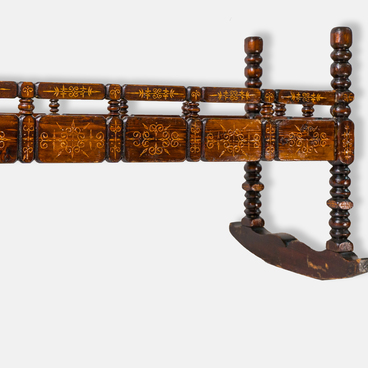The Adyghe people were known for making high-quality burkas. According to Doctor of Historical Sciences Galim Khizirovich Mambetov’s research, burkas were initially worn by chabans (sheep herders) and shepherds. It was later used by horsemen. The burka was lint-free with straight narrow shoulders. At first, the horseman’s and the shepherd’s burka were identical, however, with time, the horseman’s burka became more sophisticated: thinner, longer, with pile, broad shoulders and flaps. The shepherd’s burka has also undergone some changes: sleeves, straps and buttons were added. It was shorter than the regular burka.
Burkas were exclusively made by women who began learning this skill from an early age. The production consisted of several labor-intensive processes. It began with the careful processing of wool for layering. The wool was sorted by separating long and short strands of fibers. Teenage girls also took part in this stage. After that, the wool was dried, combed on a stand and beaten with a bow — a special device for loosening sheep wool.
Next came the most difficult and important stage in the burka-making process — layering. It required great expertise and skill not every woman had. Usually, the help and supervision of an experienced craftswoman was required at this stage. The processed soft wool undercoat was laid on mats or fences attached to each other, and long wool was placed on top.
Then it was sprayed all over with warm water and rolled up together with the mats into a tube, which was then rolled back and forth by all the women. In some places of Adygea, the felted wool was sprayed with warm salt water. The women used to sing a special song to synchronize their movements when rolling wool.
The Adygs produced burkas not only for themselves but also for sale. According to Karl Paysonel, back in the 18th century, the Adygs sold 200 thousand burkas a year. They were taken to Russia, Poland, Crimea, Moldova, Wallachia and Turkey. In the 19th century, Adyghean burkas were also in great demand in the foreign market. They were acquired by representatives of other Caucasian peoples, Kuban and Terek Cossacks.
At the turn of the 20th century, the production of burkas declined, as imported factory goods began to replace products made by local craftspeople.


